Contents
- Asadgadh Fort
- Barshi Takli fort
- Balapur Chhatri (Umbrella)
- Balapur Fort
- Buddha Bhumi
- Chakradhar Swami Mandir
- Choubari Barav
- Kalanka Devi Mandir
- Kholeshwar Mandir
- Mahadev Mandir
- Moreshwar Mandir
- Mothe Shriram Mandir
- Nanasaheb’s Mandir (Vada)
- Narnala fort
- Patur Caves
- Siddheshwar Mandir
- Sundarabai Khandelwal Tower
- Vari Bhairavgad
- Sources
AKOLA
Cultural Sites
Last updated on 18 July 2025. Help us improve the information on this page by clicking on suggest edits or writing to us.
Asadgadh Fort
![Ruins of Asadgad in Akola[1]](/media/culture/images/maharashtra/akola/cultural-sites/ruins-of-asadgad-in-akola1-d224ad0e.jpg)
Asadgad lies in the city of Akola. The Akola Gazetteer (1977) documents that towards the end of Aurangzeb’s time, Akola was under the jagir (landed estate) of his prime minister, Asad Khan. Asad Khan's local representative, Khaja Abdul Watif, was in charge of the town. This official constructed the walls of Akola, which he named Asadgarh, to honor Asad Khan. He constructed a small fort here, which came to be known as Asadgadh. The fort is said to have been constructed in 1697 CE. Before the construction of the fort by Asad Khan, at the same place was an earthen gadhi (a fort-like house or palace built to defend against an attack), constructed by Akolsinh (the supposed founder of the city of Akola). It is said that the spot was indicated to Akolsinh by the prodigy of a hare pursuing a dog across it. (Such stories of dogs and hares are also told about the cities of Vijaynagar (modern-day Hampi) and the city of Kandy, Sri Lanka.)
The fort is currently situated in the old city and looks over the Morna River. Only one wall, some gateways, and burujs (bastions) have survived. There are multiple inscriptions found on the fort that explicitly mention the names of Asad Khan and Alamgir Aurangzeb. A Marathi inscription found on the fort mentions that a person called Govind Appaji built the fort in 1843 CE. The Mandir of Raj Rajeshwar (the venerated devta of Akola city) is situated within walking distance from the fort. Recently, a martyr's memorial and a garden have been built on the fort.
Barshi Takli fort
The area around the Kalanka Devi Mandir in the town of Barshi Takli is filled with remnants of what appears to be a structure that looks like it was part of a bigger fort in times bygone. Arched Gates made up of basalt and limestone can be observed. Other parts of the structure are extremely dilapidated.
![The Remnants of the Barshi Takli Fort[2]](/media/culture/images/maharashtra/akola/cultural-sites/the-remnants-of-the-barshi-takli-fort2-54bc605f.jpg)
Balapur Chhatri (Umbrella)
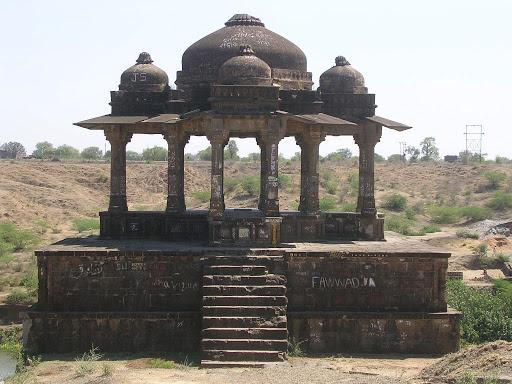
On the bank of the Man River in Balapur stands the Balapur chhatri (kiosk) of Raja Jai Singh, which is built on a high platform. It is essentially an umbrella-shaped pavilion, constructed by the 17th-century Mughal general Mirza Raja Jai Singh, who was sent to the Deccan to confront Shivaji Maharaj.
The pavilion has twenty pillars supporting five domes: a large central dome surrounded by four smaller ones. The decoration mainly features leaf and dart patterns along with lotus flower designs, and the interiors of the domes are finely crafted.
Originally, a flight of steps connected the pavilion to the river, but these have now disappeared. Built in the Rajputana architectural style, the structure suffered severe damage during a flood. Unfortunately, some miscreants have also vandalized it by carving and writing on its surfaces.
Balapur Fort
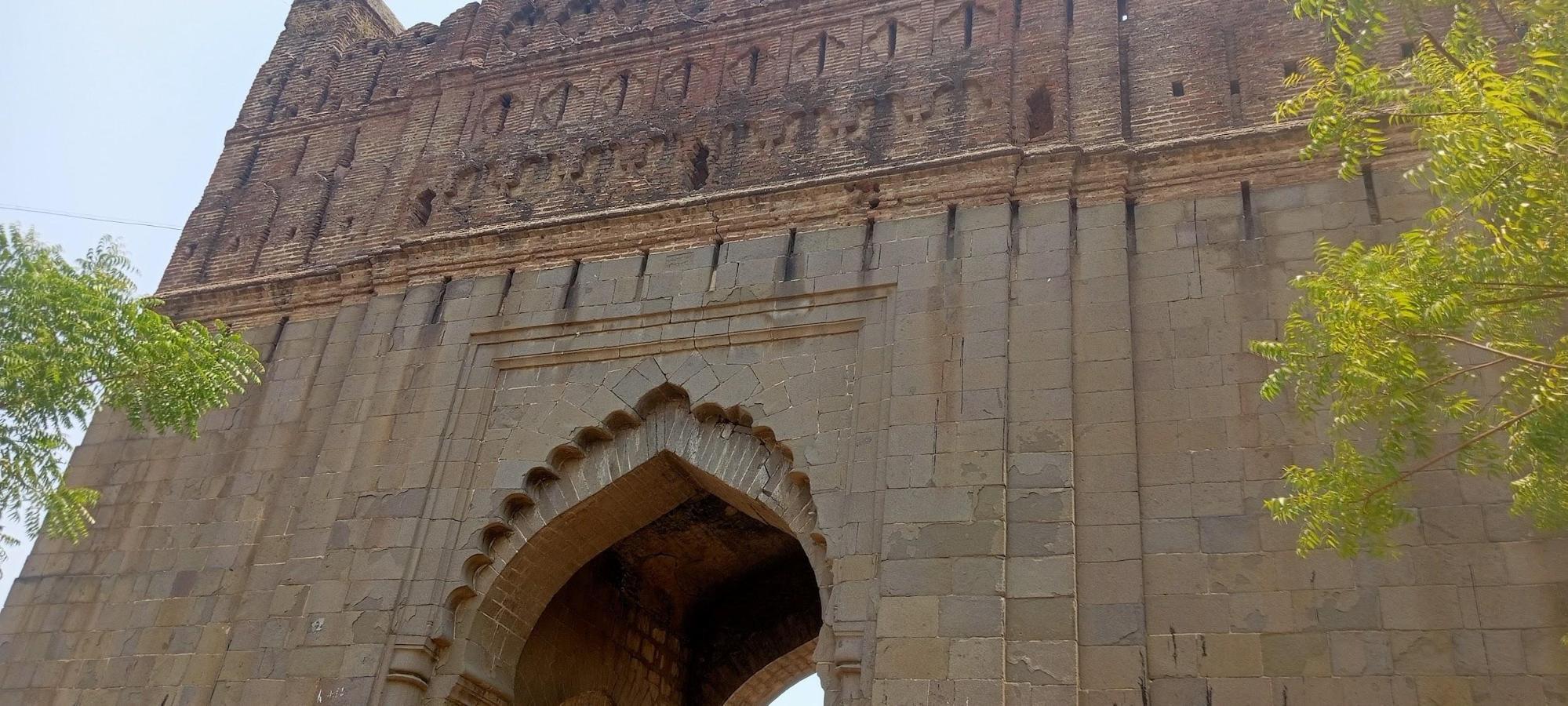
The Balapur fort, as the name suggests, is located in Balapur town. The Akola Gazetteer (1977) documents the late Mughal era fort of Balapur, situated on a peninsula created by the waters of the Man and Bhains rivers. It crowns the high ground between the two branches of the river, and its walls and bastions, which are very lofty, are built entirely of brickwork of the period to which the fort belongs. The outer or lower fort is a decagon, with a bastion at each angle, and above it rises, by the whole height of its walls, the inner fort, which is a pentagon, each angle terminating with a bastion. The outer and the inner forts are entered by fine Mughal gateways, above the former of which is an inscription (mostly in Persian), now illegible, which formerly recorded the building of the fort.
The construction of the fort started in the year 1717 and was completed by Ismaeel Khan, a Nawab of Elichpur (Achalpur, Amravati) in 1757. A flood caused by the swelling of both rivers eroded part of the embankment and also damaged the fort. Now the fort houses the Tehsil office and other government offices. The British are credited with building these buildings during their rule.
![Tehsil Office at the Balapur Fort was built during the British era[4]](/media/culture/images/maharashtra/akola/cultural-sites/tehsil-office-at-the-balapur-fort-was-bu_t0E6rpz.jpg)
Buddha Bhumi
![Buddha Bhumi at Shirla was built by N.P. Sanghpa[5]](/media/culture/images/maharashtra/akola/cultural-sites/buddha-bhumi-at-shirla-was-built-by-np-s_Q9drrzS.jpg)
According to Lokmat (2014), the Buddha Bhumi at Shirla (Patur Taluka) is an important site for Navyana Buddhists in Maharashtra. The Stupa that we see today was built in 2007-08 by N.P. Sanghpal, the founder/caretaker of Chaityabhumi, Dadar (the site where B.R Ambedkar was cremated). Before this, a small Dhamma Kuti was erected here, and after a while, some miscreants started misusing the place. As soon as N.P. Sanghpal heard of this, and he got the miscreants evicted and built the current structure. Just outside the stupa, a beautiful statue of Dr. B.R. Ambedkar can also be seen.
Chakradhar Swami Mandir
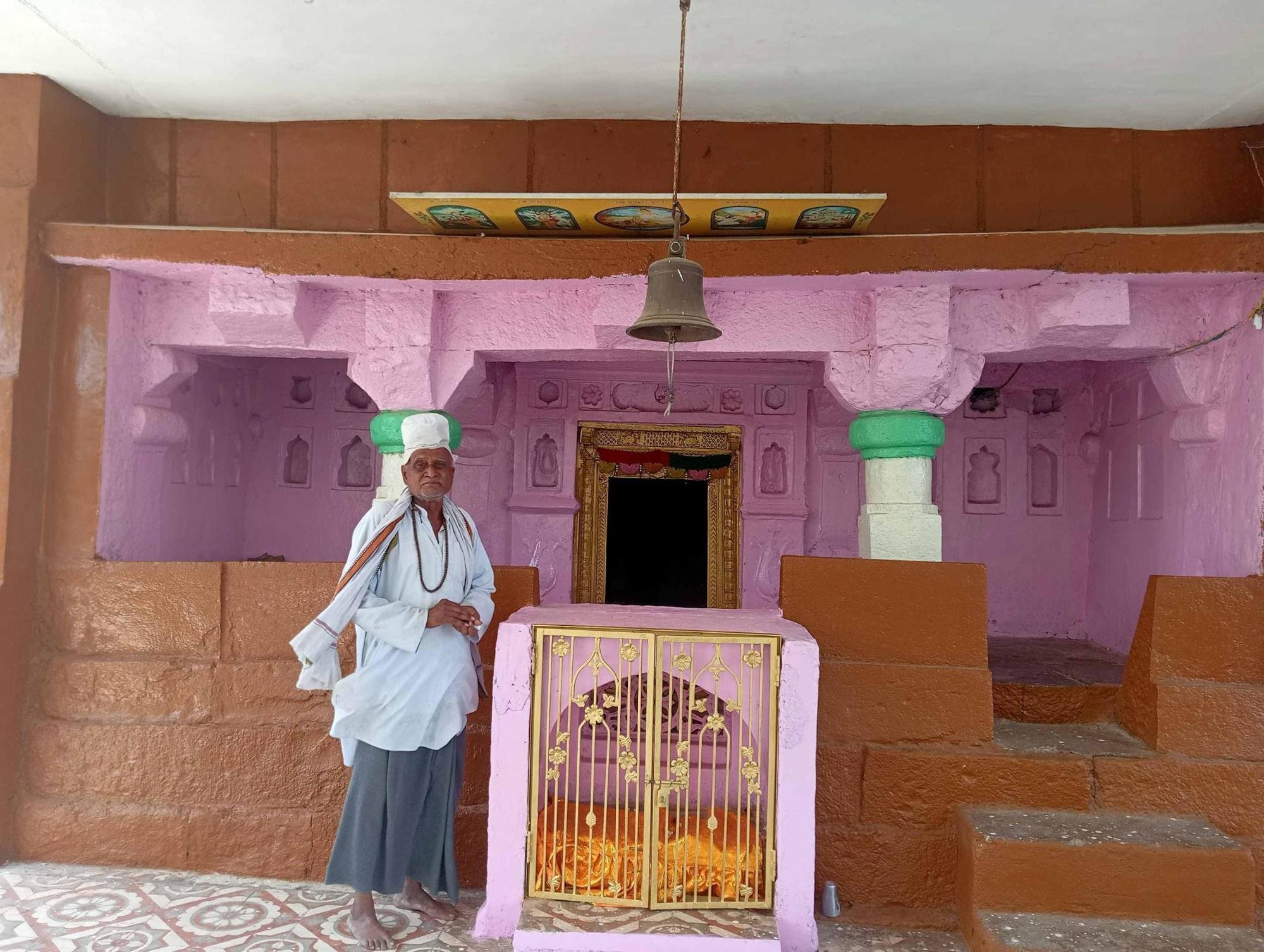
On the eastern end of the town of Barshi Takli is a small Mandir of Chakradhar swami, a 12th-century sant and philosopher. It is believed that Chakradhar Swami lived here for a night while traveling from Paithan in Sambhajinagar (Aurangabad) to Ridhpur in Amravati. This Mandir, like many other old Mandirs in and around Akola, is made in the Hemadpanthi style and is believed to be built in the 12th and 13th centuries. People of the Mahanubhav panth carry out the aartis and pujas here.
Choubari Barav
![The entrance of the Kalanka Devi Mandir[7]](/media/culture/images/maharashtra/akola/cultural-sites/the-entrance-of-the-kalanka-devi-mandir7_js4a7WQ.jpg)
Located in the village of Pinjar (Barshi Takli taluka) is the 12th-century Hemadpanthi-style Stepwell called Choubari Barav. The well has water throughout the year and is believed to be where bhakts, especially the royalty, bathed before entering the Mandir in times bygone. There are two small Mandirs, one of Shiva and one possibly of Ganpati, in the stepwell. The site is not an ASI-protected site, which has led to it being unkempt.
Kalanka Devi Mandir
![The entrance of the Kalanka Devi Mandir[7]](/media/culture/images/maharashtra/akola/cultural-sites/the-entrance-of-the-kalanka-devi-mandir7_RoWXBgU.jpg)
The Kalanka mandir, situated on the outskirts of Barshitakli town, is a 12th-century Mandir of Mata Kalanka Devi. According to an article on Purattatv by Saurab Saxena (2024), the Mandir faces North, and has two tiny windows on the East, each in the form of a cross which allow the first rays of the sun to fall on the head of Kalanka Devi. The Mandir is built in black stone and consists of a shrine and a mandap or hall, both being freely decorated on the exterior with bands of moldings and figures. The Akola Gazette (1977) documents that four decorated pillars support the central ceiling of the hall. The principal figures around the outside of the Mandir, except for Ganapati, are females, Mahakali and Mahishasuramardini, occupying important positions; the ceiling is particularly well-decorated. Inside the Mandir, there is a Sanskrit inscription, which is unfortunately in a damaged state. It is believed to be from the Shaka year 1098, corresponding with 1177 CE. During the said period, King Hemadrideva was ruling from Tekkali (modern Barshi Takli). He was later defeated by a general of the Yadav King Singhana named Kholeshwar.
It is said that the current murti of the devi appeared here from Mahur after the older murti was vandalized. Another story tells of how, after a battle with an Asur, the devi stopped here to rest and then was enshrined here. A lot of visitors come here during Navratri.
Kholeshwar Mandir
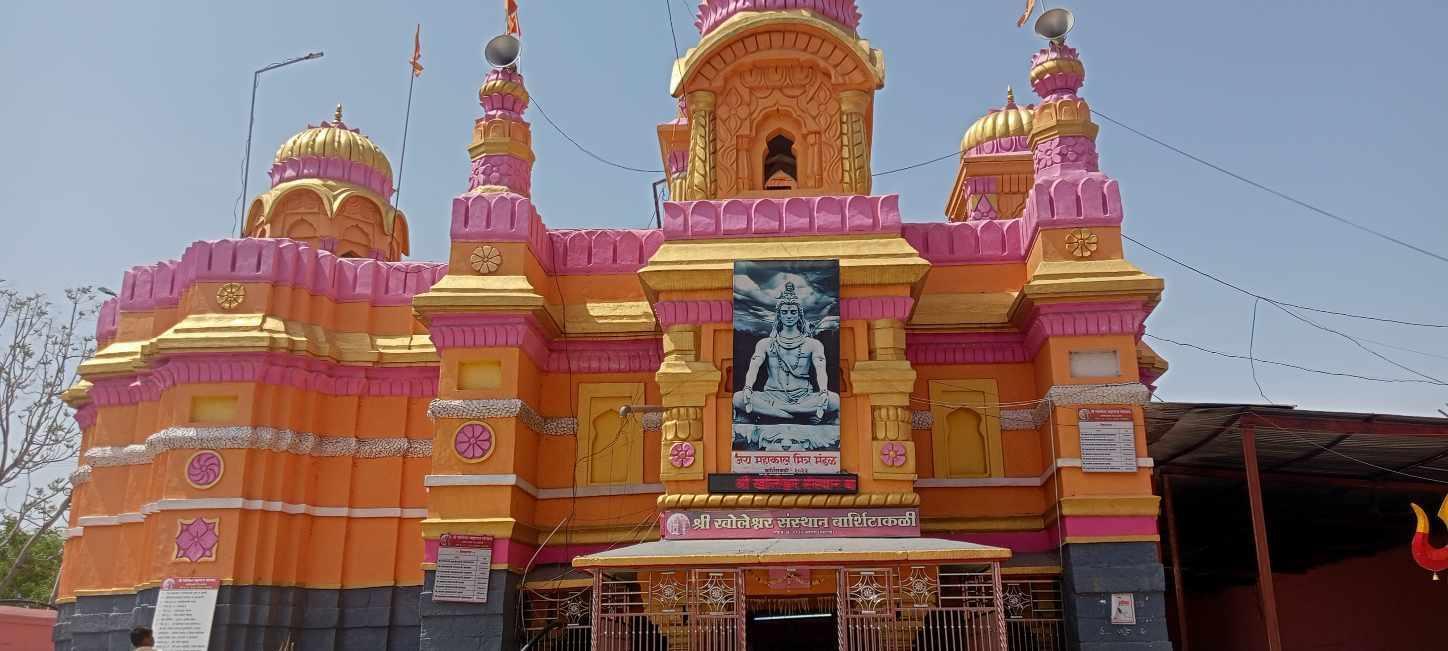
On the outskirts of Barshi Takli town, on the banks of the Vidrup River, is the Hemadpanthi-style Shiva Mandir of Kholeshwar. The Mandir is named ‘Kholeshwar’ because the Shivlinga here lies at a spot that can only be accessed by a flight of stairs that lead you down a cavity, as ‘khol’ means deep in Marathi. (Kholeshwar was also the name of a general of the Yadav King Singhana, who brought the region of Barshi Takli under the Yadava rule.)

In the center of the Mandir is the Nandi Mandap in which a Basalt Nandi is seated. There are two murals of Yakshas on the pillars as well. These are called bharvahaks (portrayed in a way, as if they were supporting the Mandir).
Mahadev Mandir
![The Mahadev Mandir at Pinjar[8]](/media/culture/images/maharashtra/akola/cultural-sites/the-mahadev-mandir-at-pinjar8-99b4d3f2.jpg)
Dipak Wankhede, in one of his videos exploring Barshi Takli, came across the ancient Mahadev Mandir at Pinjar village (Barshi Takli taluka). The Hemadpanti-style Mandir is said to have been built during the Yadava period (12th century). The Mandir is built with black rock and is fondly called Kapileshwar Mahadev Mandir. The local community has preserved and protected this Mandir for generations. There is a school on the Mandir premises as well. In the Nandi Mandapa, where a black stone murti of the Nandi is kept, a Sanskrit inscription can be seen. Researchers have only been able to decipher the word 'Vdiptiprashasti' as the inscription is severely faded. Every year, during Mahashivratri, a festival of about 10-12 days is held here during which various Abhisheks and Pujas are carried out.
![Inscription at the Mandir[9]](/media/culture/images/maharashtra/akola/cultural-sites/inscription-at-the-mandir9-32b299df.jpg)
Moreshwar Mandir
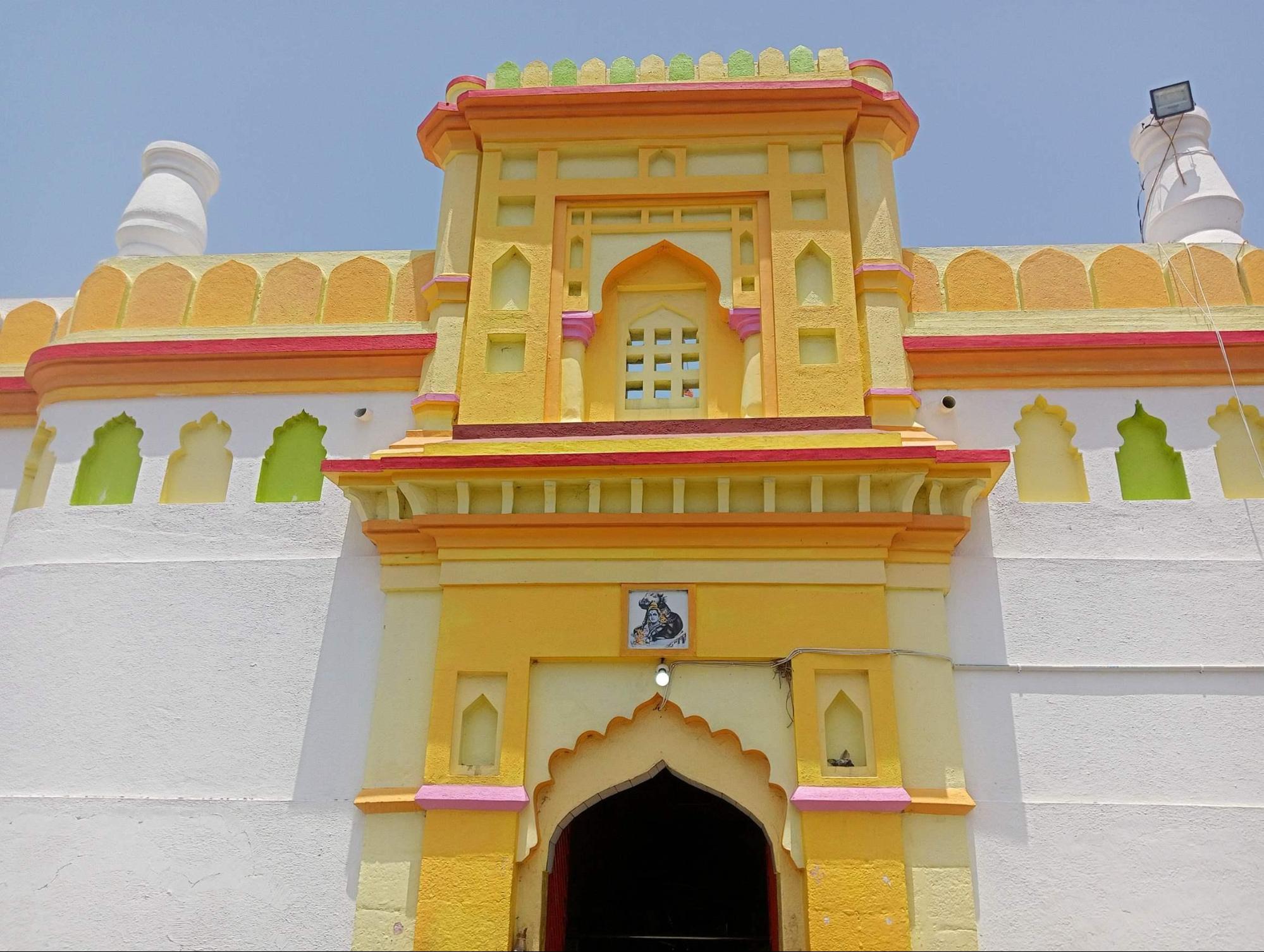
The Moreshwar Mandir of Barshi Takli, Sindhkhed, is a Shiva Mandir built in the Hemadpanthi style, possibly during the reign of the later Yadavas. There are two deep malas just outside the main entrance. After entering the Mandir, it is easy to spot the customary Nandi facing the garbhagriha (sanctum).
A local legend, mentioned in an article on the website known as Dyanbatukaram, also explains the ‘mosque-like’ appearance of the Mandir. According to this story, a chieftain of Aurangzeb wanted to demolish the Mandir, the locals protested against this, and after experiencing some divine miracles, the chieftain decided not to go ahead with his demolition plan. Instead, he renovated the Mandir and gave it its current mosque-like appearance. Locals also say that there is an inscription issued by Aurangzeb that says “No one should touch/harm this Mandi,” kept in the basement of the Mandir.
Every year, bhakts flock to the Mandir during the Mondays (Somvar) of the Shravan month. In addition to this, a special yatra is also held on Chaitra-Shudh Dwadashi (12th day of the Sudh paksh of Chaitra month).
![Chaitra-Shudh Dwadashi Yatra (held between March - April)[10]](/media/culture/images/maharashtra/akola/cultural-sites/chaitra-shudh-dwadashi-yatra-held-betwee_qZhxgtT.jpg)
Mothe Shriram Mandir
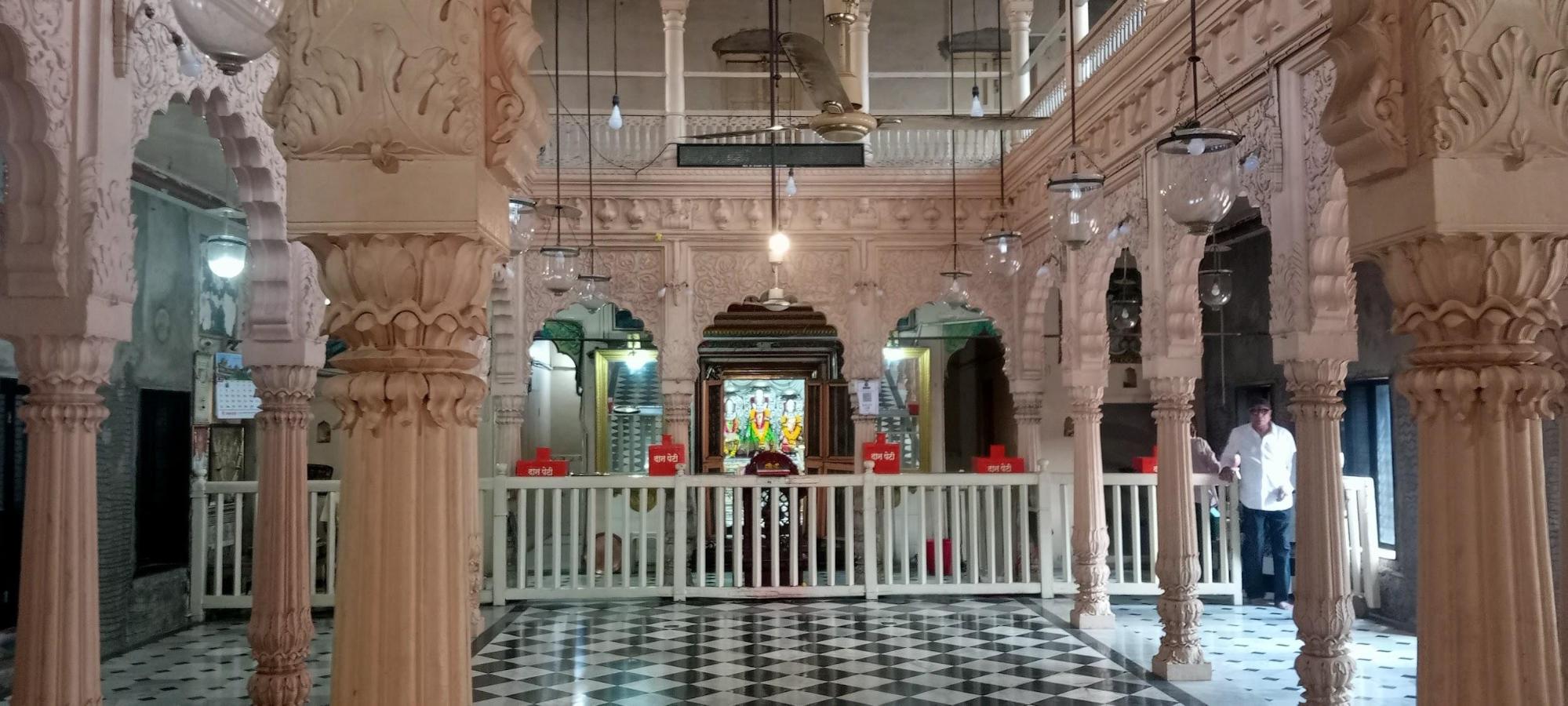
Situated on one of the busiest roads of the city of Akola is the almost 120-year-old Mothe Shriram Mandir. Sant Shri Gajanan Maharaj (19th - 20th century sant) is said to have visited this place and had asked one of his bhakts called Bachulal to make a Mandir at this very location. Bachulal bought the land and started the construction in 1903, completed it by 1906, and opened it to the public in March 1907. Since then, the Mandir has become an important place of worship. In 1908, when Lokmanya Tilak (Indian Freedom fighter) was on his visit to Akola, he visited the recently made Mandir as well.
Nanasaheb’s Mandir (Vada)
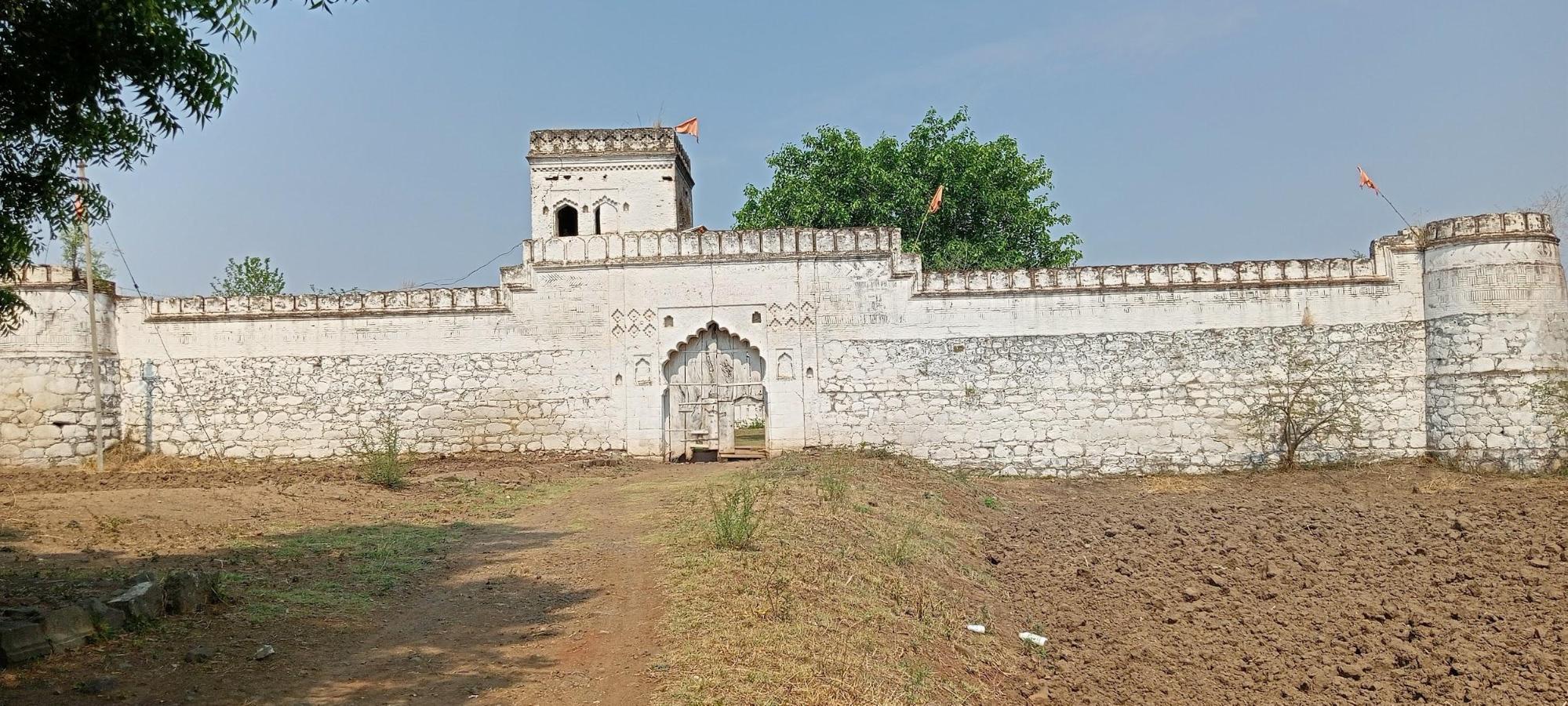
The Mandir/Wada of Nansaheb is situated in the Patur taluka of the district. The Mandir is dedicated to Nana Saheb, an 18th-century sant who is said to have been born around 1700 and took Samadhi in 1740. The Akola Gazetteer (1977) documents that he was the son of a rich Yajurvedi Brahman of Patur, originally called Narayan Kanhoji Amle. Even in his youth, he spent a great deal on making gifts to Brahmans and the poor. A grandson of Nana Saheb is believed to have brought back to life the son of a high-ranking official at the Bhonsle court in Nagpur. In gratitude, the official built the present Mandir.
The Mandir, which is about 300 to 350 years old, resembles a fort because its structure includes elements such as an outer boundary wall and four towers (buruj) in four directions. Building materials such as bricks, stones, and soil mixed with lime are said to have been used. Nanasaheb is believed to have lived and taken a Samadhi here. The Mandir also houses the Samadhis of Nanasaheb’s wife, two of his disciples, Sonaji and Honaji, an old Hanuman Mandir, about 5 wells, a few deep malas, and a Nagarkhana. At the center of the structure lies the Samadhi/Mandir of Nanasaheb, which has his Padukas and a stone sculpture of a tortoise (Kurm). The Mandir lies near another famous Mandir, i.e,. The Renuka Mata Mandir. The locals believe that the Mandir also had a basement, which was later destroyed. In 1812, due to a fire, the Mandir sustained major damage.
Earlier, bhakts would take a quarter-month-long yatra to this Mandir, though now the place and the yatra have drastically reduced in importance. A fair is held on Magha Shuddha Dashmi (in January-February); it was formerly very largely attended, and locals tell of how miracles of healing used to occur at the event.
Narnala fort
The fort of Narnala, which is about 75 km from Akola city and 30 km from Akot city, is one of the many important forts situated in the Satpura mountain range, built entirely of black-basalt rock. The Akola Gazetteer (1977) documents that it is believed that the first fortifications were made by Naryendrapur, a descendant of the Pandavas and at the time Emperor of Hastinapur (Delhi). Firishta mentions in his Tarikh-i Firishta (transl in 1829) that Ahmad Shah Bahamani got the fort repaired around 1425 when he constructed Gavilgad in Amravati to obstruct the invaders from the north frontier of his kingdom.
The Akola Gazetteer (1977) further tells that almost every building on the fort seems to be of Islamic origin. Emperor Akbar and some of his generals fought various battles with the Shahs of Deccan (splinters of the Bahamani Kingdom) to capture Narnala and Gavilgad, which the Mughals were eventually able to capture. After that, the fort passed onto the Marathas, specifically the Bhonsles of Nagpur, and then eventually to the British.
A cross stands on a high point on the eastern side of the fort and marks the grave of a European officer who was left in charge and died here after the battle of Adgaon, but no trace of his name is left.
![Partial view of the entrance gate of the Narnala Fort[11]](/media/culture/images/maharashtra/akola/cultural-sites/partial-view-of-the-entrance-gate-of-the_ezWBpoK.jpg)
An important attraction at the fort is the Naugaj toph, a nine-yard gun. This is said to have been placed there during the reign of Aurangzeb in 1670, and it bears an inscription in Persian. This 18-foot-long cannon with a diameter of 6 feet had a reach of seven miles. Formerly, there was a sister gun called Kadak bijli (terrible lightning), but this somehow fell over the cliff into Chandan Khora, the valley of sandalwood, and is said to have mysteriously disappeared.
![Naugaj Toph on the Narnala Fort[12]](/media/culture/images/maharashtra/akola/cultural-sites/naugaj-toph-on-the-narnala-fort12-6ac97dd2.jpg)
Patur Caves
![Patur Caves that are said to have been carved out by the Vakatakas[13]](/media/culture/images/maharashtra/akola/cultural-sites/patur-caves-that-are-said-to-have-been-c_xATd2Ch.jpg)
The Patur caves, as the name suggests, are situated in the Patur taluka of the district. A. Jamkhedkar (2011) in his book titled Kon Hote Vakataka? Tells us that these are three Buddhist caves that are said to have been built by the Vakatakas. Their cutting might’ve started in the Satvahana dynasty from the 2nd century BCE to the 3rd century CE. Though they were probably completed during the reign of the Vatsagulam Vakataka King named Harisen and his Minister Varahdev (480 - 510 CE).
The caves are primarily made of basalt rock, common in the Deccan Plateau. They were discovered in 1730 by English archaeologists Edmund Lyon and Robert Gill. According to the report of another archaeologist, Cousins Henry, these are Buddhist Caves. However, according to a report published by Y.M. Kale, a renowned historian, in 1923, one of the caves also had a Sanskrit inscription, which was later damaged and cannot be found now.
There is speculation that the caves belong to the Shaiva sect. Pieces of evidence that support this speculation include the discovery of a Parvati believed to be from 450 CE found in cave no. 2 (kept in Nagpur Central Museum) and the presence of a square-shaped sanctum sanctorum (hinting towards the presence of a Shivlinga) in the prime cave. Two inscriptions written in Petikashirsha Brahmi were also found outside the cave, believed to be from the Vakataka period.

According to Vivek Chandurkar (2020), there are many stories surrounding these caves that are prevalent amongst the locals. One such story is that of how Bhagwan Krishna used these caves to defeat the Asur Kalyavan, who was given the boon of immortality by Shiva. It is said that after receiving the boon from Shiva, the said Asur went on a rampage by carrying out injustices against the local community and sadhus. The people flocked to Krishna, pleading with him to help them out. Krishna knew it was impossible to defeat the Asur in open battle, so he decided to bait him by hiding in these caves. Kalyavan, as it was expected, fell right into the trap. The caves at that time were occupied by Rishi Parashar, who was deep in penance. The Asur, on his arrival in the cave, disturbed the Rishi, which caused him to open his eyes, and as soon as Rishi Parashar laid his powerful eyes on Kalyavan, he was reduced to ashes.
Siddheshwar Mandir
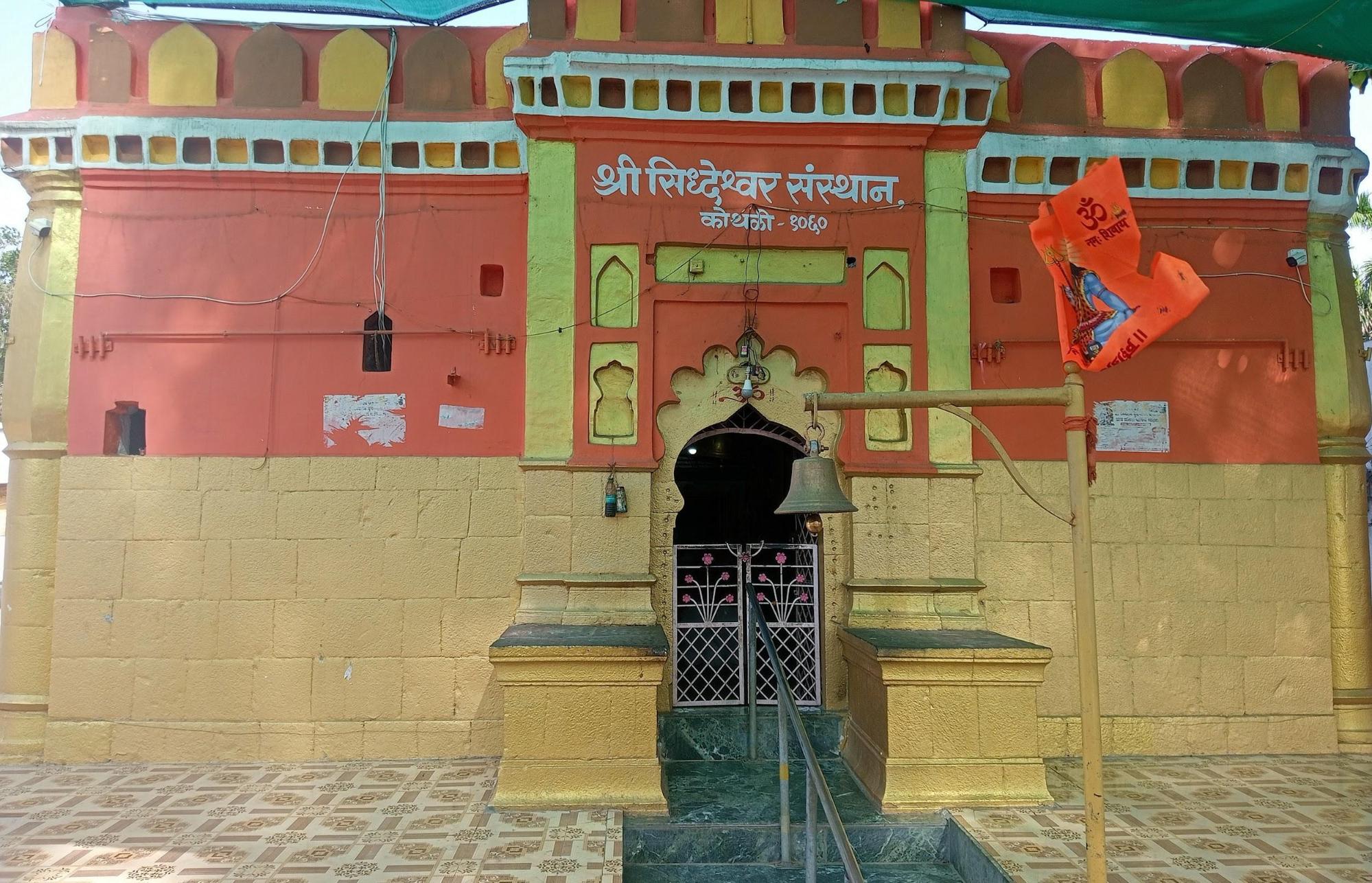
Siddheshwar Mandir at Kothali (Barshi Takali taluka) is an important devta for the locals. People believe that the Mandir was supposedly built in 1060 by Sardar Mahadev Jadhav (most probably a local chieftain). The structure is made with Black rock and seems to be built in the Hemadpanthi style (though the style was created in the 13th century). Inside the Mandir, there is a customary Nandi (built of black stone). The structure has been painted now. Mahashivratri is celebrated with great pomp.
Sundarabai Khandelwal Tower

This famous landmark clock tower is called the Sundarabai Khandelwal Tower, the tower is located inside the city. On 12 February 1962, an opening ceremony was carried out in the presence of the then-prime minister, late Pt. Jawaharlal Nehru. The region around the clock tower is known as Tower Chowk.
Vari Bhairavgad
![A gateway on the Bhairavgad Fort[14]](/media/culture/images/maharashtra/akola/cultural-sites/a-gateway-on-the-bhairavgad-fort14-c966b3d8.jpg)
Bhairavgad Fort is situated in Vari village (Telhara taluka) on the banks of the Wan River. According to Gunjan Deshmukh (2019) for My Fort Explorations, the fort was built with bricks as the materials visible in the main gate suggest. It was most probably under the control of the Bhonsles of Nagpur for a while till their fall in 1853. The fort had four white mud towers with a Bhairavnath Mandir in the middle. Today, only the dilapidated main gate, with a nagar khana and a newly built Bhairavnath Mandir, can be found inside.
![A wall on the Bhairavgad Fort[15]](/media/culture/images/maharashtra/akola/cultural-sites/a-wall-on-the-bhairavgad-fort15-e5899a6f.jpg)
![A wall at the fort, one can notice the brick walls[16]](/media/culture/images/maharashtra/akola/cultural-sites/a-wall-at-the-fort-one-can-notice-the-br_JGwuzc8.jpg)
Sources
A. Jamkhedkar. 2011. Kon Hote Vakataka? Aparant Publication.
Dnyanba Tukaram Team. 2021. मोरेश्वर यात्रा, सिंदखेड. http://dyanbatukaram.com
Gunjan Deshmukh. 2019. Wari Bhairaogad Fort – On the bank of the Wan River. My Fort Explorations.https://gunjan282.wordpress.com/2019/11/10/w…
Lokmat Staff. 2014. Shirla Buddha Bhumi’s Center propagation. Lokmat. https://www.lokmat.com/akola/shirla-buddha-b…
Mahomed Kasim Ferishta; translated from the Persian by John Briggs. 1829. History of the rise of the Mahomedan power in India.
RJ Dipak Wankhade. 2018. Barshi Takli Fort | Barshi Takali | Akola | Vidarbha Tourism. YouTube.https://www.youtube.com/watch?v=uxIGEkXdnuA
RJ Dipak Wankhade. 2021. चौबरी बारव पिंजर | Chaubari Barav | Pinjar. YouTube.https://www.youtube.com/watch?v=-Bhpy0dUkNM
RJ Dipak Wankhade. 2021. श्री कपिलेश्वर महादेव संस्थान पिंजर | Kapileshwar Mahadev. YouTube. https://www.youtube.com/watch?v=ZeEjPGPmPZs
Vivek Dyanneshwar Chandurkar. 2020. पातूरच्या ऐतिहासिक लेण्या. Lok Sanwad. https://www.loksanvad.com/patur-chya-aitihas…
Last updated on 18 July 2025. Help us improve the information on this page by clicking on suggest edits or writing to us.